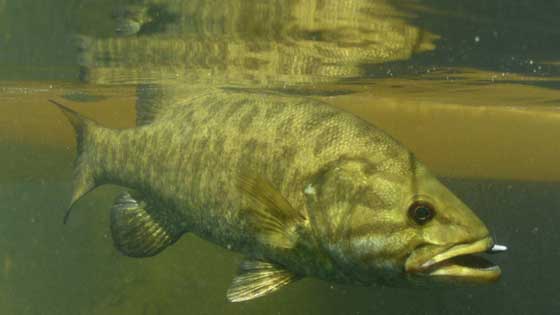Smallmouth Bass Habitat
Shallow weedy flats that extend into deep water with large areas of sand, rock and gravel are needed for a large Smallmouth population to thrive.
Where to find Smallmouth Bass
Smallmouth bass fishing is best in clear, rocky lakes and streams. They are more finicky than the largemouths. As a result they’re less widely found in the same level of abundance around the world despite their large distribution.
While Smallmouth Bass fishing is different from Largemouth bass, their requirements are very similar in terms of lures and methods used.
Unlike the Largemouth, Smallmouth prefer and thrive in cooler temperatures and enjoy fast flowing rivers and streams with a drop of 4 to 20 feet per mile.
They can also be found in lakes at least 30 feet deep, containing rocky ledges and gravel bottoms. Using the same techniques to catch largemouth bass won’t work as well here.
While Smallmouth are very adapt at living in fast moving water, they’re equally at home in deep lakes like the Great Lakes.
- They don’t require river access to the sea for spawning and can survive in land locked lakes and reservoirs as well as those lakes and rivers making up the Great Lakes drainage system.
Lake and River Bed Conditions
They like debris-laden shores of tree stumps and fallen brush. And drop-offs from 15 to 40 feet with steps of textured bottoms. These are ideal conditions for catching large Smallmouth Bass and might even contain Largemouth Bass as well.
Other popular territories include submerged ridges and islands in deep water reaching within 15 feet from the surface. The submerged island should be found off a point and covered with rocks hiding crawfish and other smallmouth prey.



